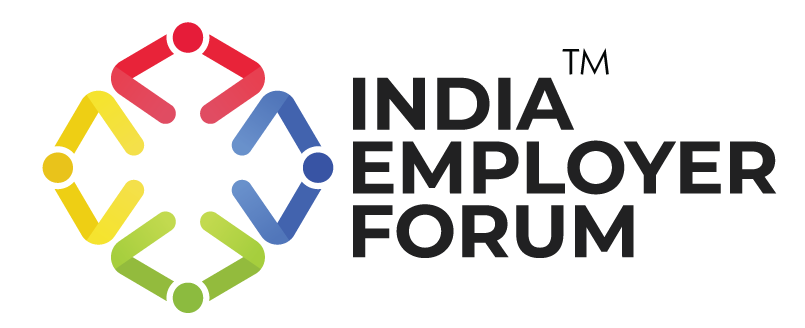Artificial Intelligence is often hailed as the next general-purpose technology—on par with the steam engine or electricity in its transformative potential. Unlike prior technologies, which were expensive and exclusive before gradually reaching the masses, AI is following an inverted adoption curve: it is computationally intensive yet widely accessed by individuals, freelancers, and small businesses before large institutions fully deploy it. Paradoxically, a technology capable of solving humanity’s hardest problems is primarily being used to automate its simplest ones.
Top-Down to Bottom-Up: The New AI Adoption Model
Traditionally, technological adoption followed a top-down path: computers, mobile phones, and the internet first appeared in research labs, corporate boardrooms, or defense agencies before trickling down to consumers. AI, however, has flipped this model. Tools like ChatGPT, Gemini, and Midjourney have put advanced generative capabilities into the hands of millions, often for free or minimal cost.
Yet, democratized access masks a hidden truth: building and running AI systems is astronomically expensive, requiring massive data centers, specialized chips, enormous energy, and extensive natural resources, producing a significant carbon footprint. The concentration of power in a handful of global tech giants mirrors historical cases like Coca-Cola and the tobacco industry, which profited while harming public health. Today, AI similarly generates efficiency gains by automating low-end jobs, cannibalizing livelihoods, and consuming vast environmental resources, while pressing global challenges—climate, healthcare, education—remain largely unaddressed. The incentives of profit and quick returns ensure that AI is often applied where it is easiest to monetize rather than where it is most needed.
AI Adoption in India and Globally: Rapid but Routine
India exemplifies the global pattern of rapid uptake coupled with hidden costs. In 2025, over 41% of Indian clinicians reported using AI tools—up from 12% the previous year (Business Standard, 2025). Among consumers, 56% of metro adults in India use generative AI tools, the highest adoption rate in the Asia-Pacific region (ET Enterprise AI, 2025). Globally, over 78% of organizations report using AI in at least one business function, with a projected worldwide user base of 378 million people by 2025 (Stanford HAI AI Index 2025; S&P Global Market Intelligence, 2025).
However, much of this adoption focuses on productivity, content creation, and customer-service automation. The dual costs are stark: clerical and routine jobs are most vulnerable to automation (ILO, 2023), while infrastructure demands are immense. The International Energy Agency (IEA, 2024) predicts global data-center electricity consumption could double to 940–1,000 TWh by 2030, and training a single large AI model can emit over 284 tons of CO₂, equivalent to five cars’ lifetime emissions (Patterson et al., arXiv, 2021).
Why AI Continues to Target Low-End Roles
Most AI adoption focuses on routine, low-end tasks because they deliver quick ROI and fit existing business models. In contrast, high-impact applications like rural healthcare or education face longer timelines, higher risks, complex collaboration needs, and infrastructure or data constraints, which limit their deployment.
- Faster ROI: Automating chatbots, content generation, and internal processes produces immediate cost savings.
- Established business models: Companies understand monetization for routine automation; solving complex social challenges requires new frameworks and collaboration.
- Infrastructure and data constraints: High-impact AI solutions often involve messy data, regulatory hurdles, and cross-institutional coordination, particularly in India’s healthcare and education systems.
Productivity to Purpose: Redirecting AI to Hard Problems
Given the high cost of AI infrastructure—compute, chips, energy, and talent—the opportunity cost of routine automation is substantial. Efficiency gains are real, but they often come at the expense of societal value. Labour substitution can widen inequality and displace workers, while environmental and infrastructural costs continue to rise.
In contrast, AI’s societal payoff could be enormous if applied to hard problems: early disease detection in rural India, infrastructure resilience, and climate adaptation. These cases illustrate how AI can tackle structural gaps—doctor-to-population ratios, rural access, and disease burden—rather than simply improving incremental productivity.
- An autonomous AI system for chest X-rays, trained on over five million scans, achieved high precision and recall across multiple pathologies (arXiv).
- The AIDRSS diabetic retinopathy screening system achieved ~92% sensitivity and 88% specificity across 10,000 fundus images (arXiv).
- A survey of informal healthcare providers in Tamil Nadu and Gujarat found 69.4% were willing to use AI for TB diagnosis (Formative), signaling demand in underserved contexts.
Re-orienting AI Toward High-Impact Challenges
To realize AI’s full potential, deployment must prioritize high-impact challenges over routine automation. AI must shift from becoming a tool for routine work to a force multiplier for solving the world’s hardest problems, maximizing social and environmental benefits:
- Prioritize high-impact domains: Investments in AI should focus on areas that deliver substantial societal benefits, such as expanding healthcare access in rural and underserved regions, enhancing climate resilience through predictive tools and adaptive infrastructure, supporting sustainable agriculture with AI-driven crop and resource management, and improving quality education for marginalized populations. Targeting these sectors ensures that AI addresses structural challenges rather than incremental productivity gains.
- Measure success differently: Organizations and policymakers should evaluate AI not just on cost savings or efficiency improvements, but on societal outcomes—increased access, reduced inequality, improved health metrics, or educational attainment. This shift in metrics aligns deployment with real-world impact rather than short-term financial returns.
- Incentivize collaboration: Tackling complex, high-risk problems requires partnerships across governments, academia, startups, and industry, enabling the sharing of expertise, infrastructure, and data. Collaborative frameworks make it possible to implement AI solutions in domains where single actors may lack resources, regulatory knowledge, or scale.
- Implement ethical governance: Because AI is widely accessible yet controlled by a few, transparency, accountability, and clear regulatory frameworks are essential. Ethical governance ensures AI is used responsibly, prevents misuse, and guarantees that benefits are equitably distributed across society.
- Upskill and reskill the workforce: To prevent displacement from automation, investment should focus on human-AI collaboration, equipping workers with skills to complement AI rather than compete with it. This approach preserves livelihoods while enhancing productivity and innovation.
Harnessing AI for Humanity’s Hardest Problems
AI adoption today is inverted: widespread access exists alongside concentrated infrastructure and capital. In India and globally, much of this technology targets routine, easily monetizable tasks rather than transformative challenges. Rapid uptake and promising applications coexist with a focus on incremental rather than structural change. The opportunity is clear: if we direct AI’s compute power, chips, data centers, and human expertise toward healthcare, climate resilience, education, and other pressing societal needs, we can transform AI from a tool for efficiency into one of humanity’s most powerful instruments for addressing the world’s most urgent problems, rather than merely replacing low-end roles.






